Kings without wires: Audio-Technica ATH-DSR7BT and ATH-DSR9BT
There are manufacturers on the sound market who have made a name for themselves relatively recently and do not have a huge baggage of history behind them, and there are those who once sold sound pickups for records, then microphones and only then headphones. The second is Japanese Audio-Technica, which continues to produce high-quality devices and destroy stereotypes. At this time, the manufacturer has challenged the statement that is common among audiophiles that wireless headphones can not sound good.

Audio-Technica made a good impression about itself in the last century, and when it introduced the legendary ATH-M50 headphones, it became almost a common name among lovers of high-quality sound. In the arsenal of the manufacturer a lot of patents and developments in the field of portable audio - from a unique damping system and ventilation to active noise cancellation. In its new headphones ATH-DSR7BT and ATH-DSR9BT Audio-Technica used the Pure Digital Drive system, which allows you to transmit sound over Bluetooth without loss of quality.

“Normal” Bluetooth Audio Transmission
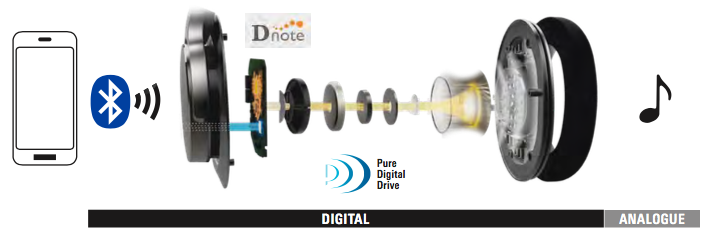
Pure Digital Drive Technology
Previously, this method of transmitting sound has not involved any of the manufacturers, so the Pure Digital Drive can be called a coup in the industry of not only wireless headphones, but also portable audio as a whole. Both models are fundamentally different from the rest of the fact that their sound at any stage does not become analog, and this ATH-DSR7BT and ATH-DSR9BT cause even more interest.
Headphones reached the Russian market only in October, and now finally are in our hands. The models turned out to be with a claim to the Hi-End not only the price tag, but also in many respects the characteristics, so take everything in order.
Yes, it did not seem to you - these headphones do not have the usual 3.5 mm jack to connect a sound source to them with a cable. Indeed, what's the point in it, if the player produces an analog signal at the output, and do these headphones work with digital? In addition, Audio-Technica clearly explained why they did it this way and not otherwise.
The company claims that the Pure Digital Drive system, which supports aptX, aptX HD, AAC and SBC codecs, is capable of keeping the digital signal to the end and minimizing the sound distortion that usually occurs during wireless audio transmission. Therefore, instead of the built-in DAC, the headphones were equipped with the Dnote Trigence Semiconductor chip - it delivers the digital signal to the emitter without digital-to-analog conversions, thereby reducing distortion. Yes, and if desired, headphones can always be connected via USB to listen to music in high resolution. The Pure Digital Drive system is used in both models.
We all remember how low the sound quality of wireless headphones was a few years ago - then it seemed that the maximum they would fit as a headset for the phone. The appearance of the aptX codec slightly changed the situation for the better, but even then far from all manufacturers use it. But aptX HD brought the wireless sound to a completely different level, because it allowed listening to Hi-Res formats via Bluetooth, which previously seemed simply impossible.
The ATH-DSR7BT and ATH-DSR9BT use specially designed True Motion drivers, only in the case of the older model, the OFC-7N voice coil with four cores is added to provide precise control of the aperture shift. This is also a plus separating the electrical and acoustic parts of the two-layer insulation. And NFC. In general, the manufacturer seems to have surpassed himself this time in the number of technologies used.
Behind the massive box in both cases there is another black box in which the headphones themselves are located, as well as a two-meter USB cable. It helps to charge the headphones, which takes about five hours, as well as being connected to a computer or other digital source.
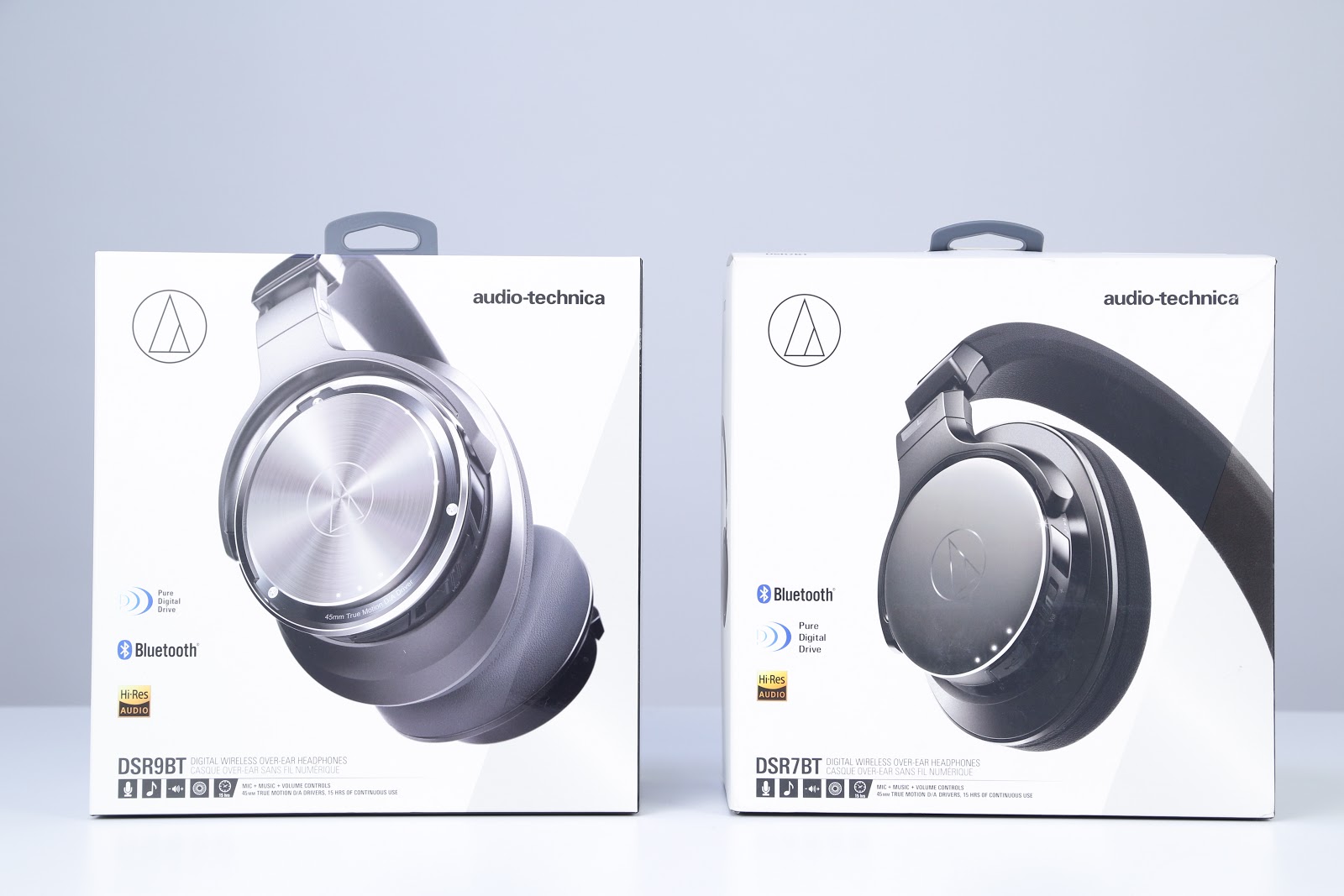
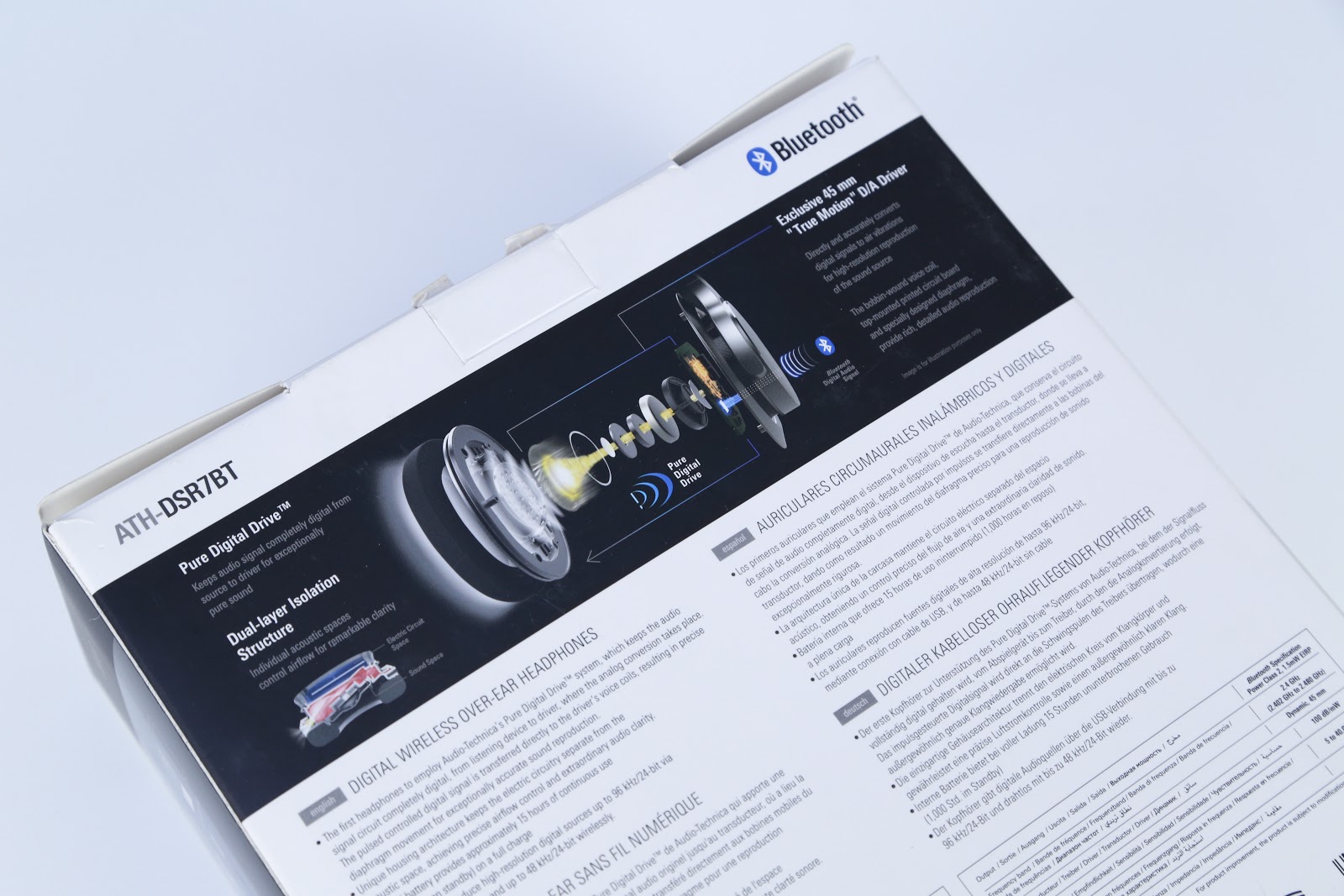
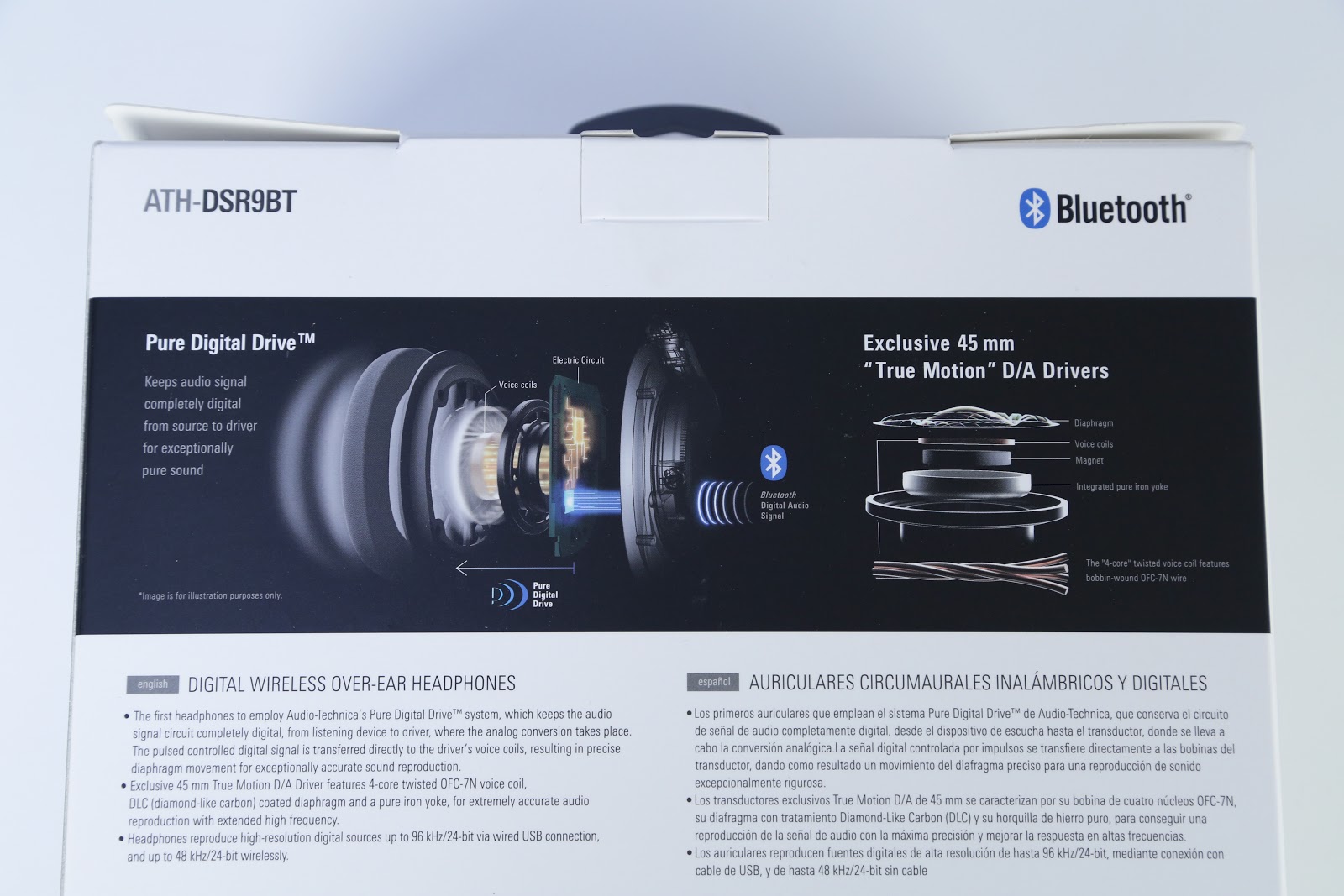
In addition, a soft case made of artificial leather is offered for the younger model, and a hard case with the manufacturer's logo is offered for the older model.
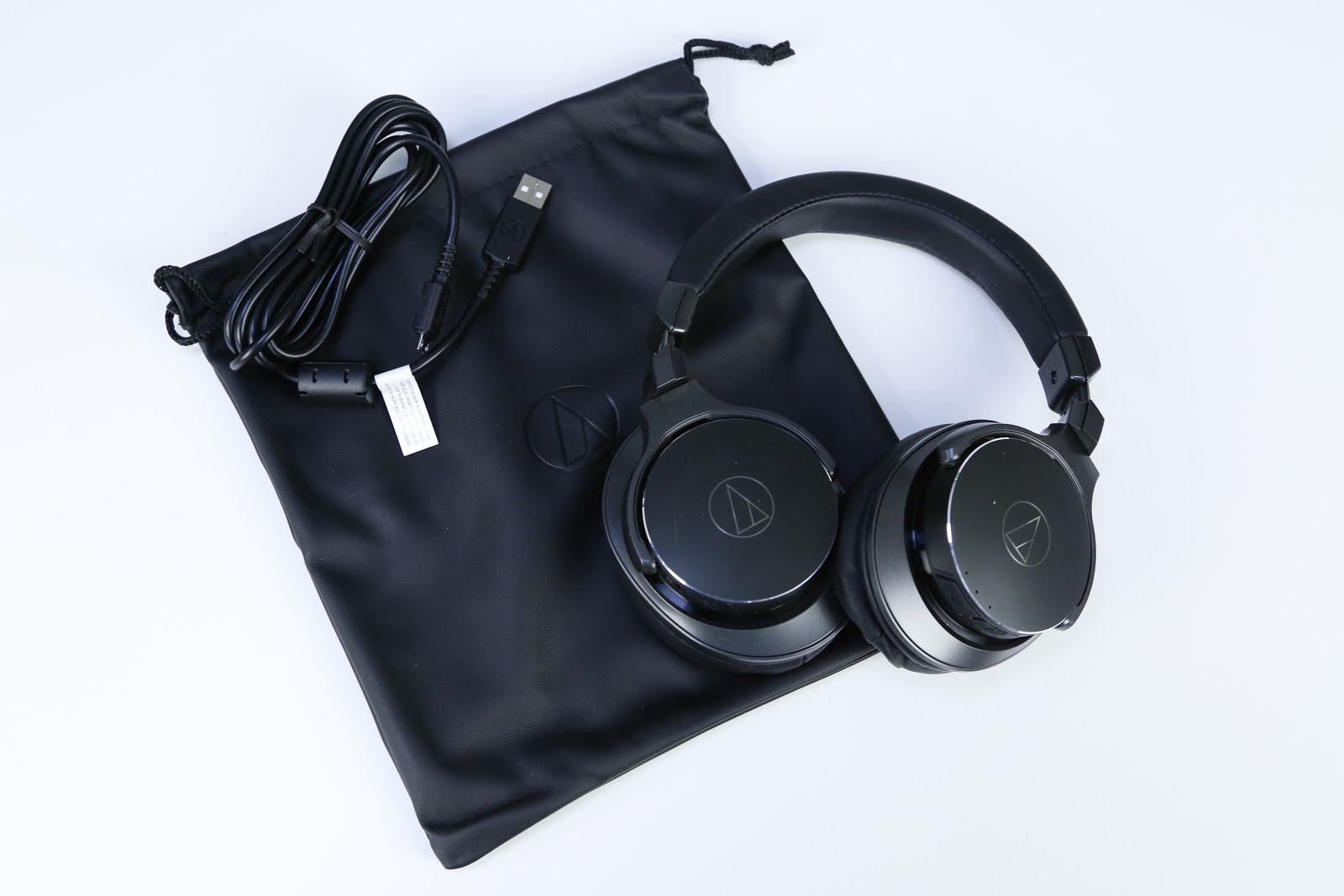
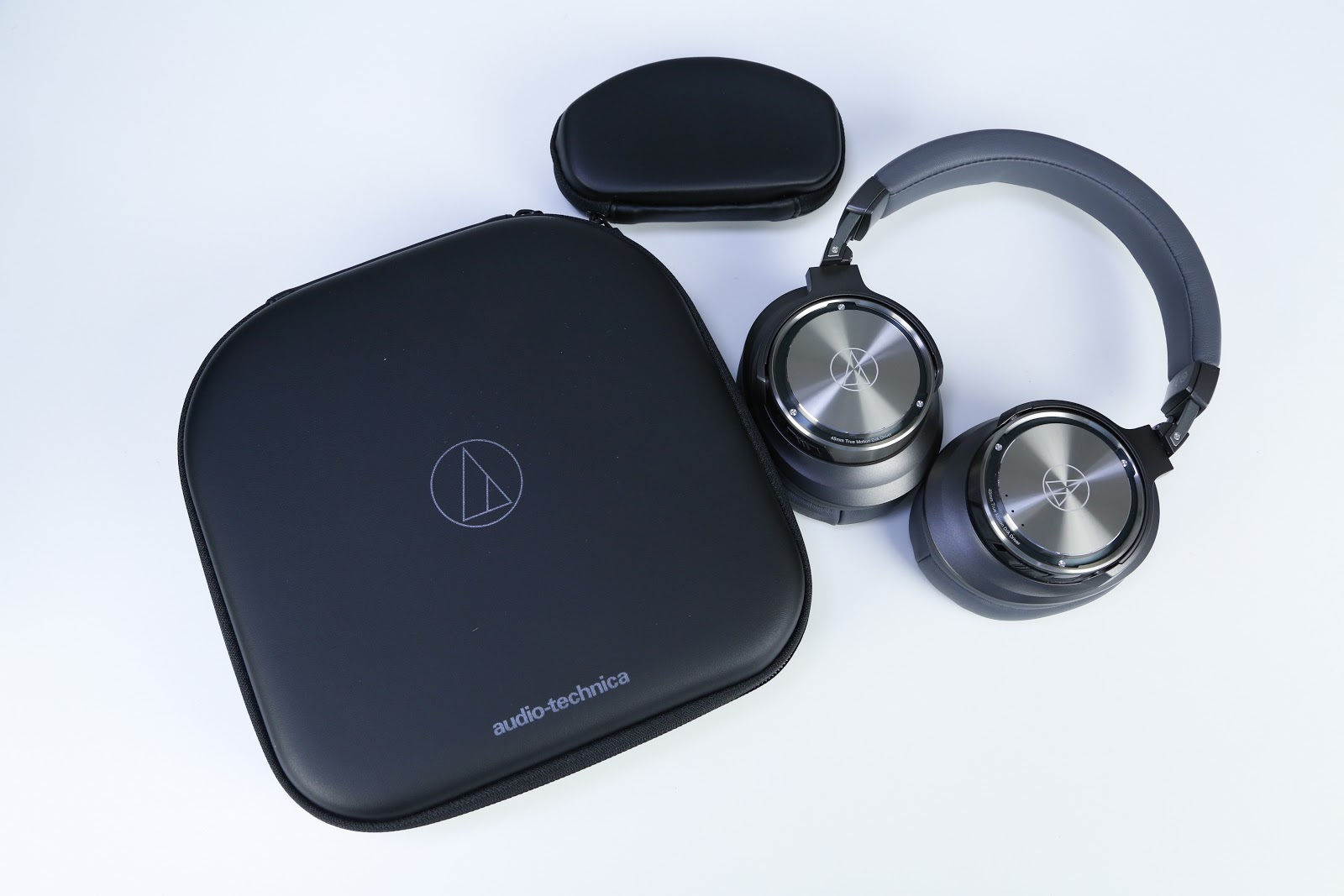
The package bundle is quite standard for Audio-Technica - everything is restrained and minimalist, nothing superfluous. Yes, and to Bluetooth-headphones, where there is no 3.5 mm jack, there seems to be more and nothing more.
Both pairs of headphones are made in a classic monochrome design, although the ATH-DSR9BT still stands out due to interesting silver inserts on the cups. Models have a leather headband, but their ear pads, though similar in appearance, but differ in sensations. In ATH-DSR7BT, they are more familiar from eco-leather with a memory of the shape of the head and ears; ear cushions ATH-DSR9BT slightly more and in addition evenly distribute the weight of the headphones, so that the owner does not get tired of this design, even with prolonged wear.
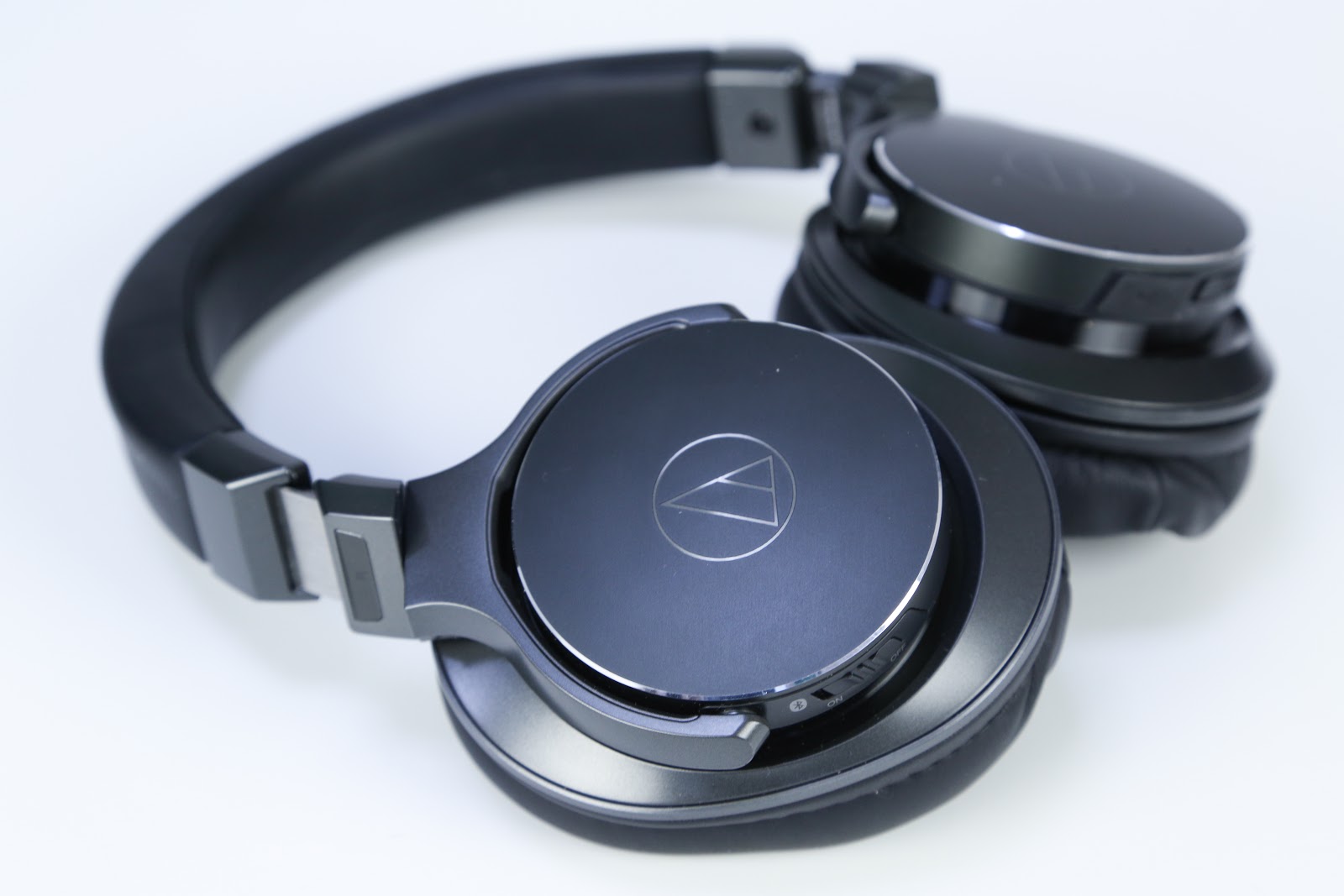

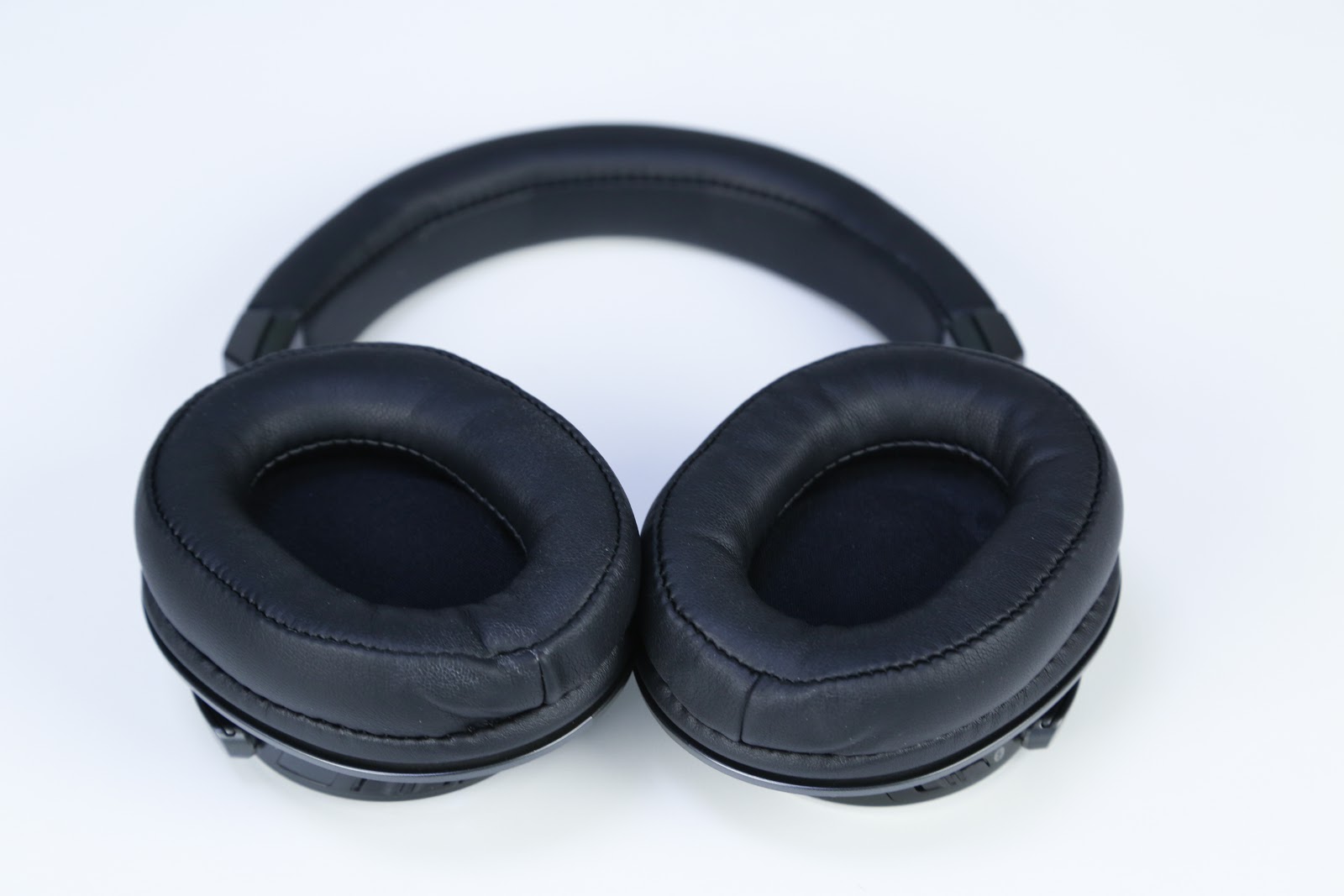
On the right cup is located below the lever, responsible for turning on and activating Bluetooth, on the left - a volume control lever, a micro USB port (under the pad) for charging and connecting to a sound source and an unusual solution in the form of a touch control panel for playback. With it, you can both pause the track and answer the call, since the headphones are equipped with a microphone and can be used as a headset.
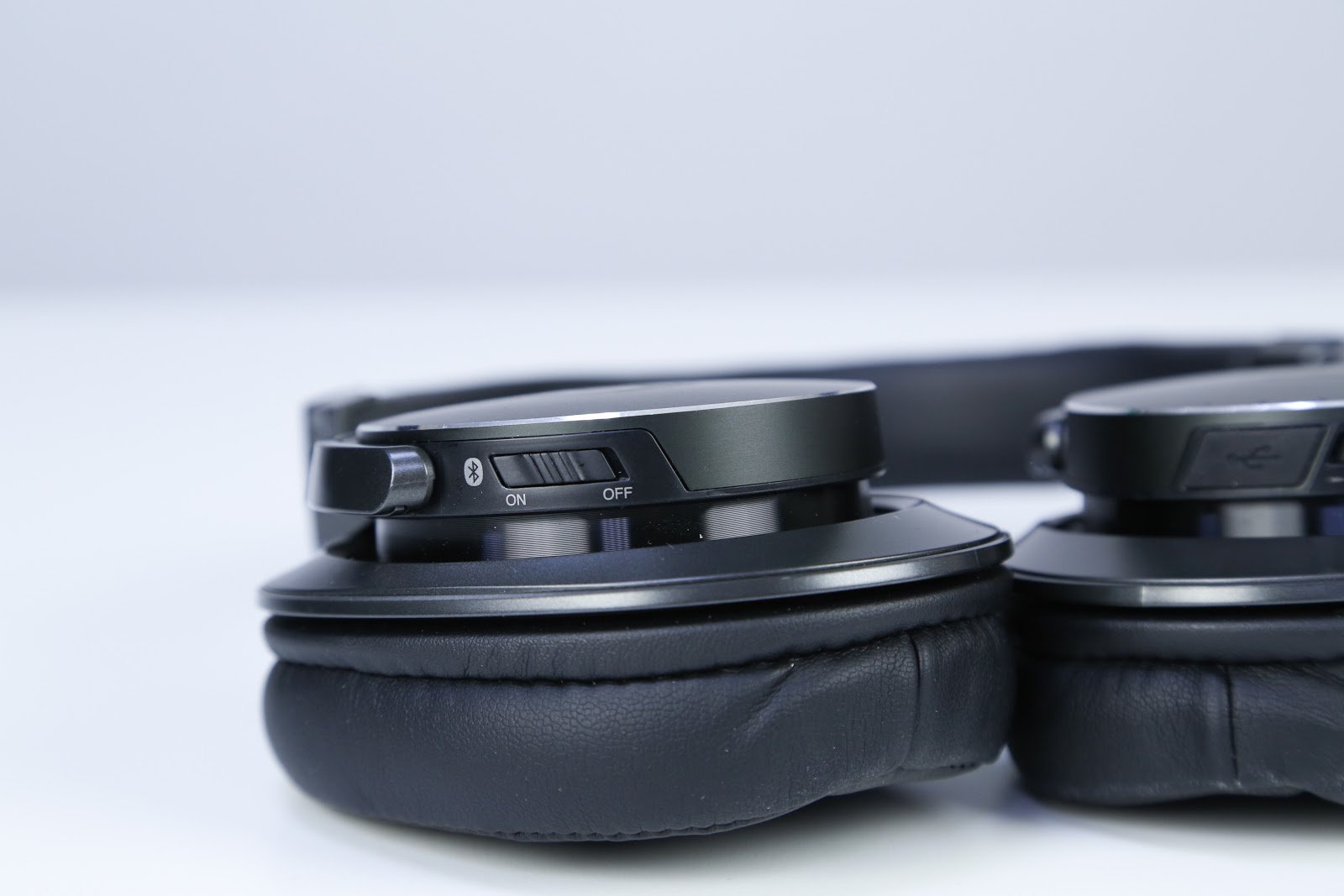
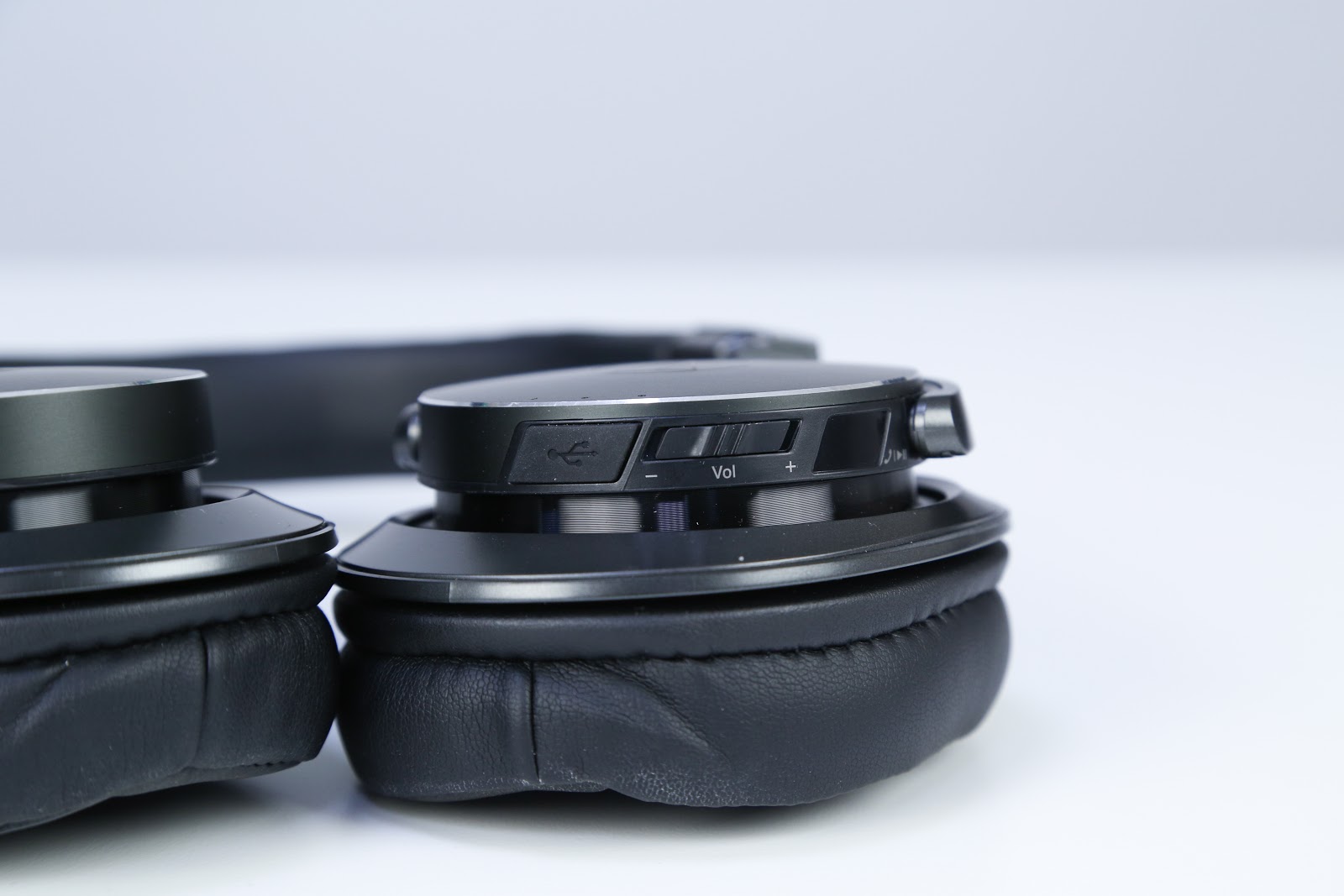
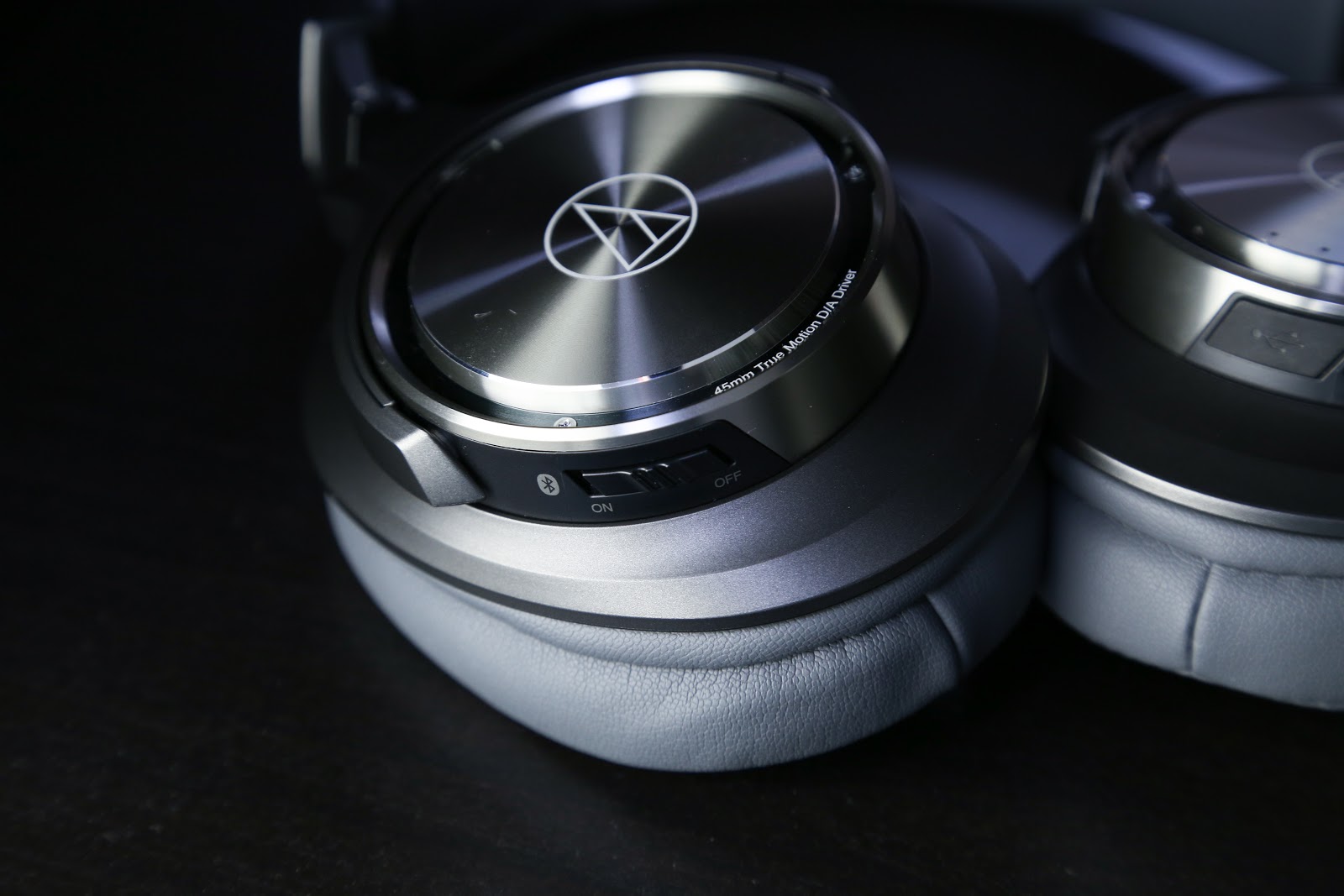
Touch control in headphones is no longer know-how, but if in many other models the elements are located directly on the cups, in the ATH-DSR7BT and ATH-DSR9BT the manufacturer limited itself to one under the cup - apparently, it was easier to reach. Was it possible to build in the usual physical button instead of the sensor? Yes. But this is not so cool and comfortable. Moreover, Bluetooth-headphones imply the use mainly “on the go” when you need to spend a minimum amount of time on playback control.
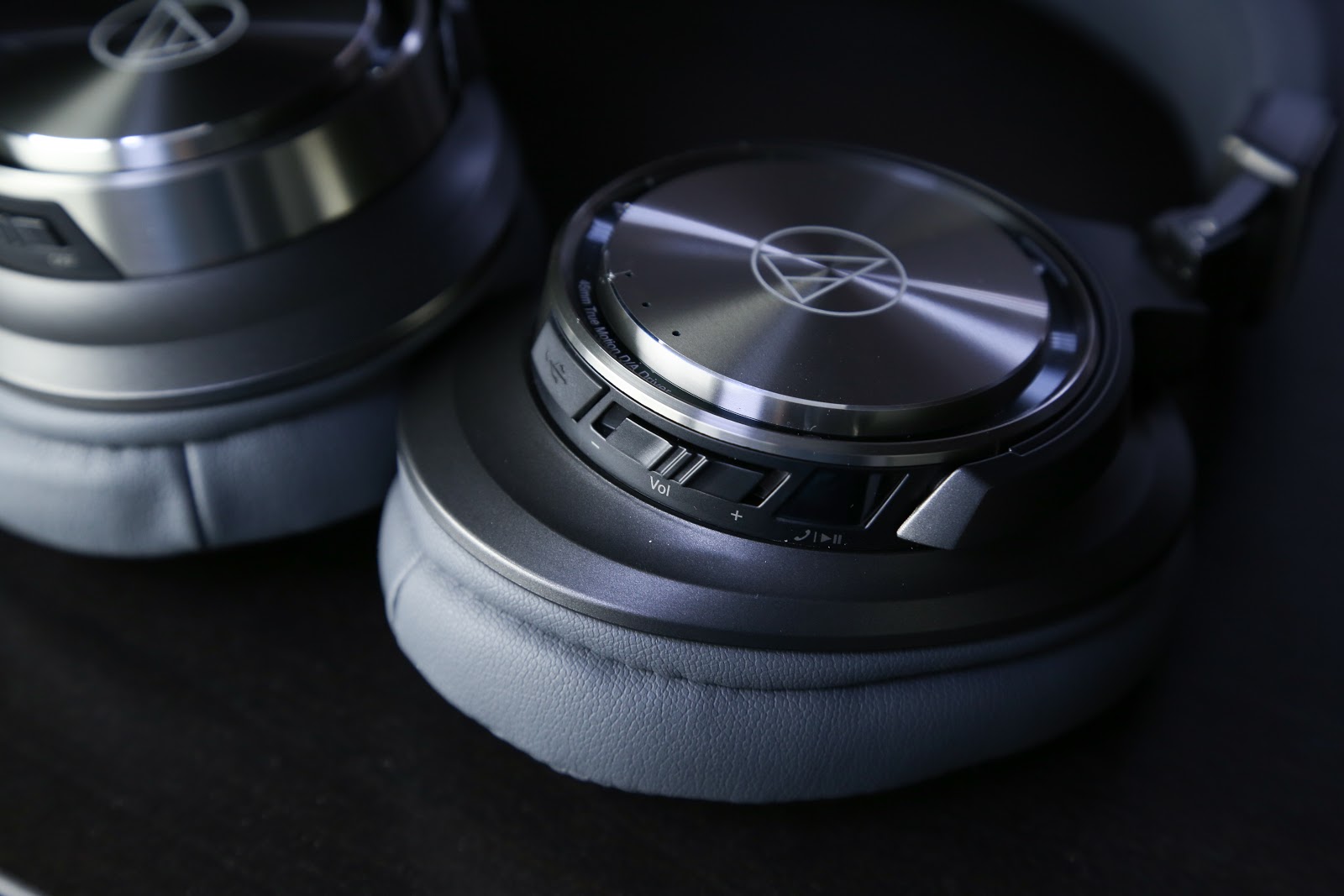
Right under the logo there was a place for a neat LED indicator, it is here on both models. The indicator displays not only the battery charge, but also the active codec.
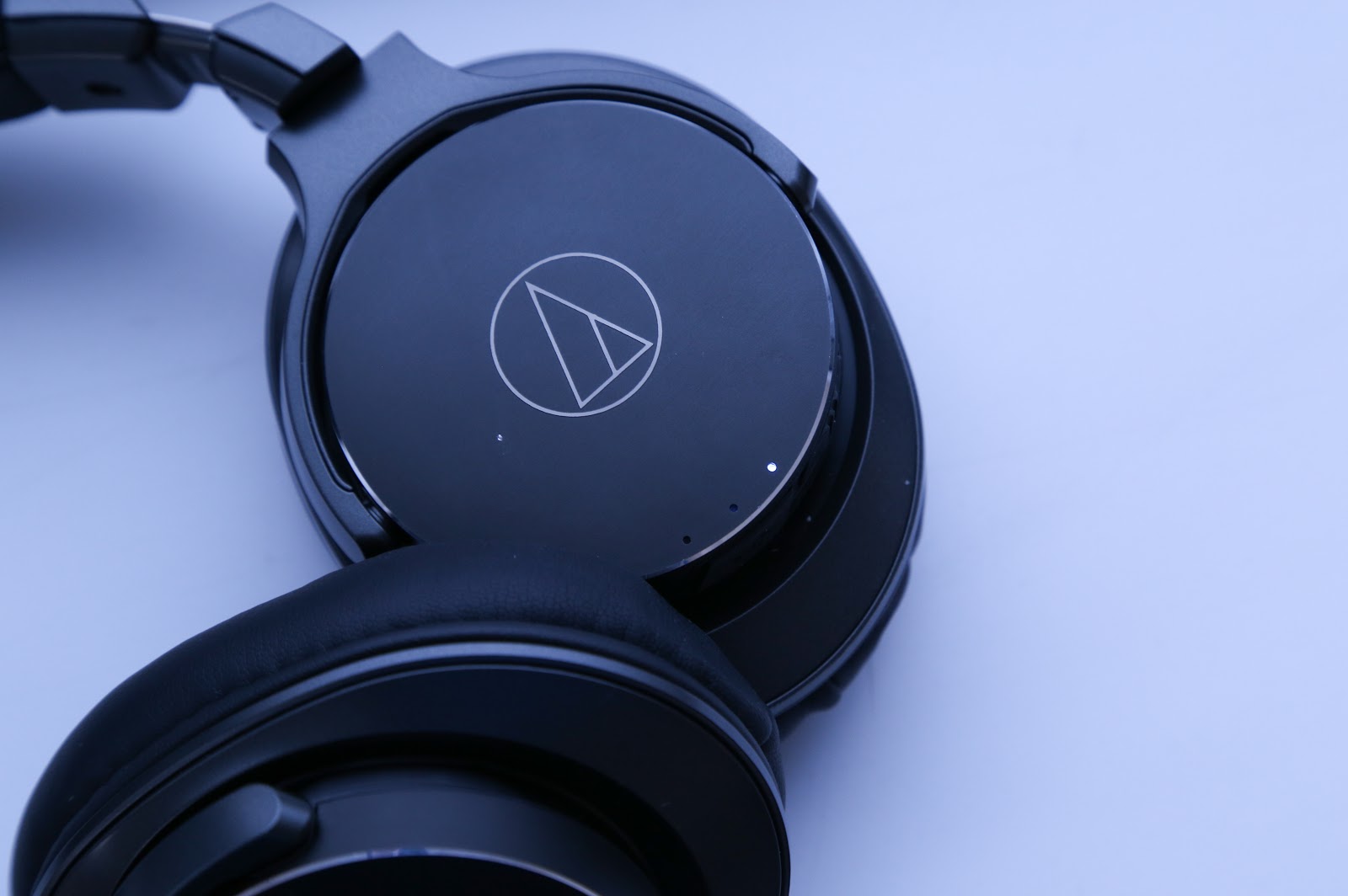
The design looks impressive, but despite its size, it feels weightless on the ears. Since each pair weighs about 300 grams (the older model is a bit heavier), ear pads apparently play a role in this. In terms of design and feeling nothing to complain about, how are things going with the sound?
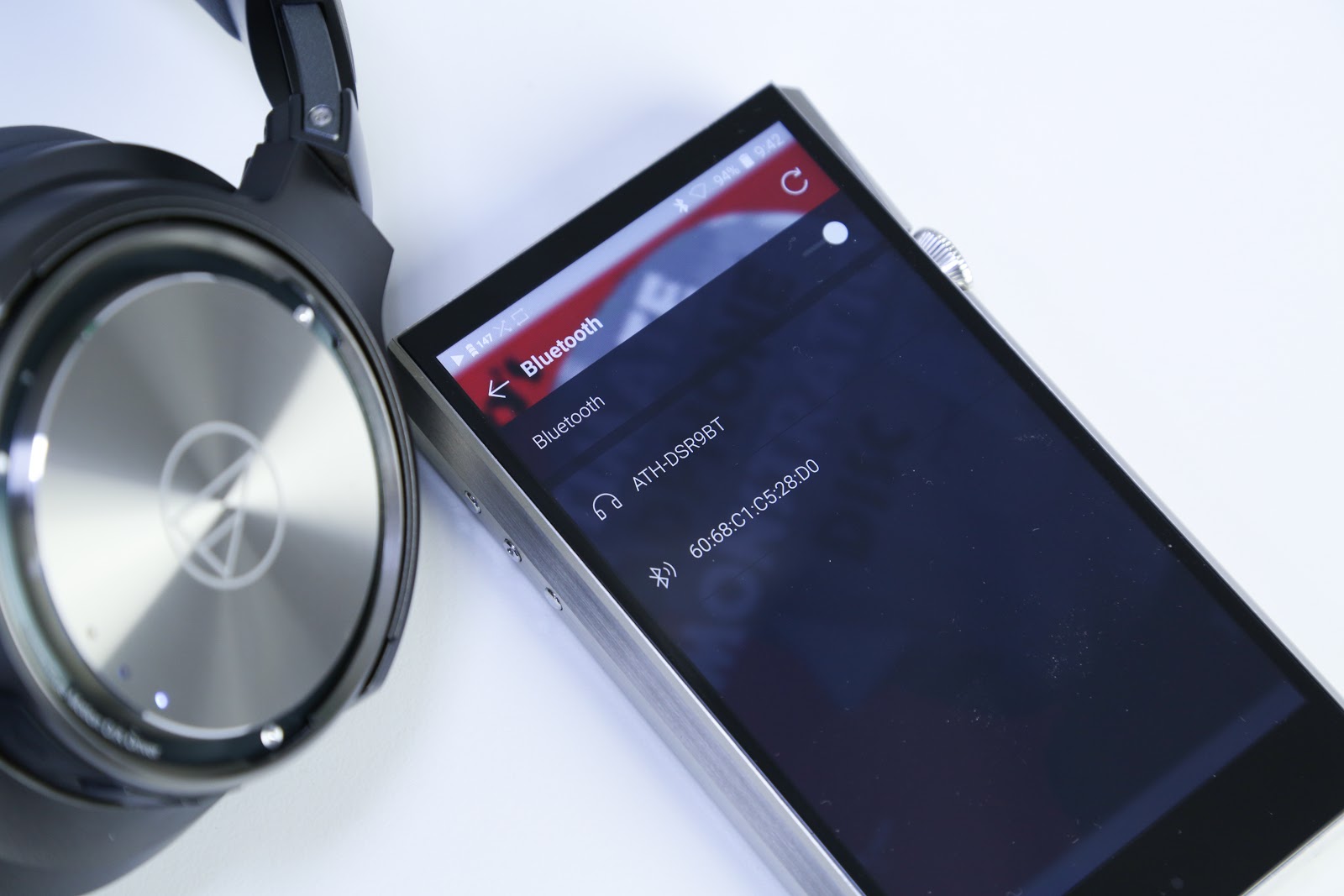
Despite the obvious similarity in design and technical characteristics, the sound of the model is completely different. Through the use of technology Pure Digital Drive ATH-DSR7BT different naturalness and improved quality. The lack of multi-stage signal processing, as in most other Bluetooth headphones, minimizes distortion and “coloring” of the sound. The junior model is capable of operating from 4 Hz to 45 kHz (quality up to 24 bit / 48 kHz), and if you connect it via USB, you can work at up to 96 kHz and use FLAC, ALAC and WAV files.
Here, by the way, measurements of ATH-DSR7BT:
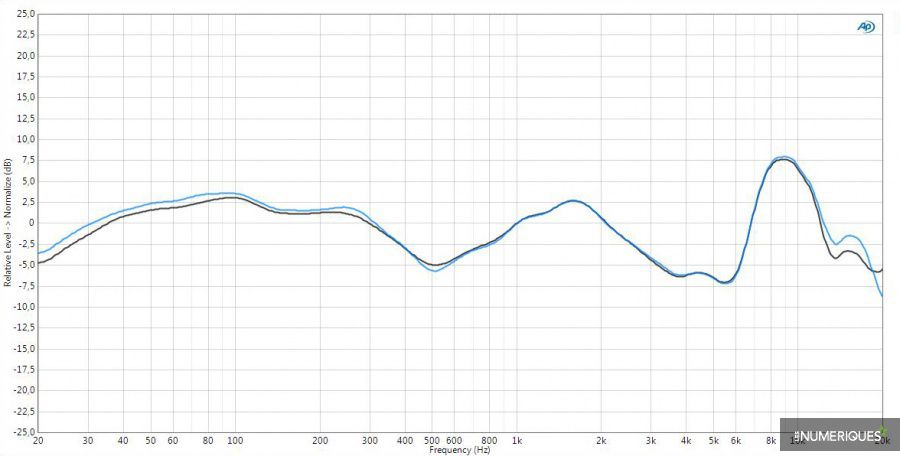
To make the frequency response easier to compare, we will immediately give a graph for the ATH-DSR9BT. It can be seen that the younger model is more even, but at the same time "average".

From a technical point of view, the older model is distinguished by an expanded frequency range, increased resistance and reduced sensitivity, but mainly due to the presence of a four-core voice coil, as well as additional damping material in the cups. The ATH-DSR9BT coil precisely controls the diaphragm offset, but the very “naturalness” that the manufacturer is talking about is achieved with an acoustic resistor — it regulates the air flow before and after the diaphragm. In addition, sound distortion "extinguishes" the aluminum structure, consisting of several layers.
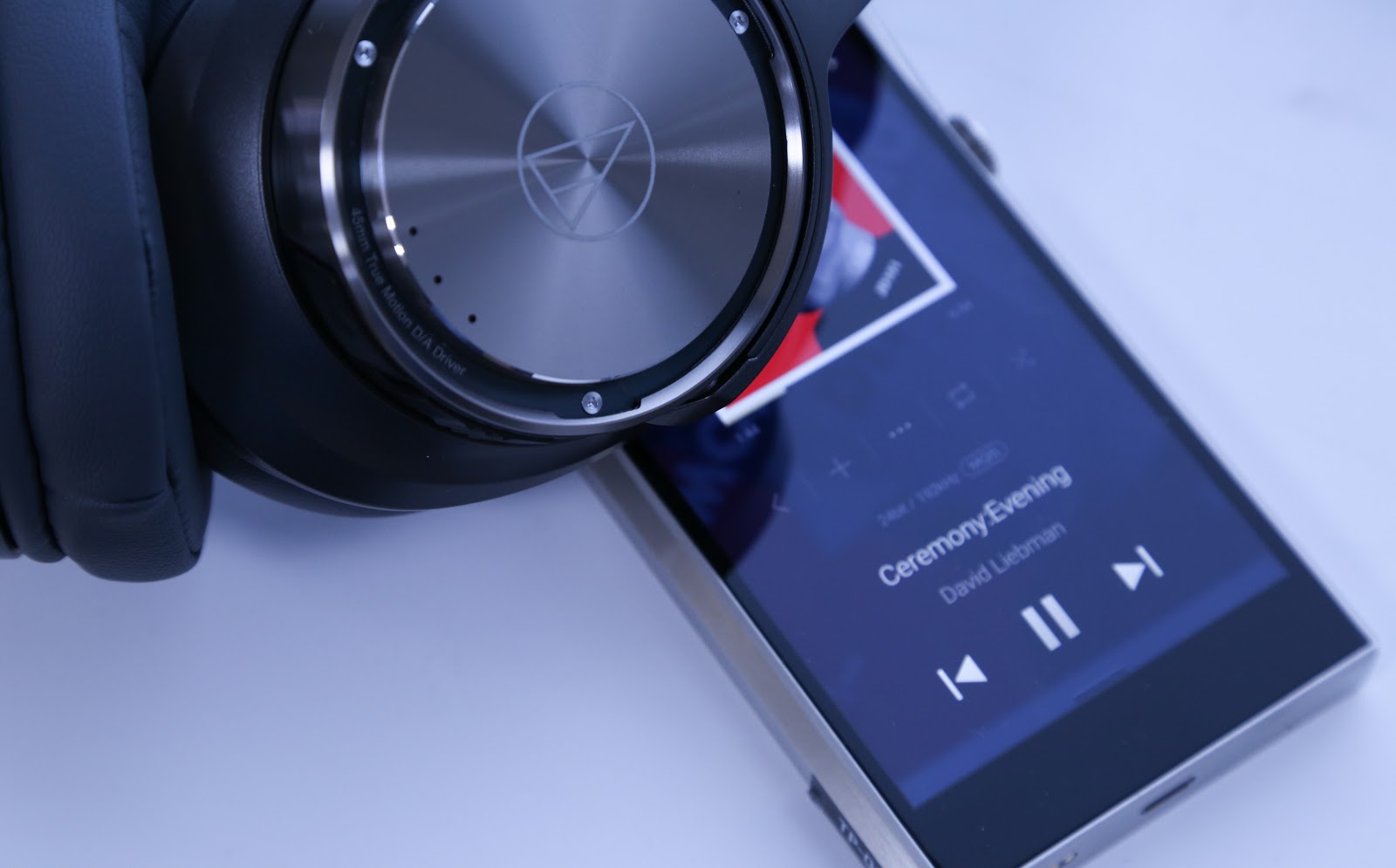
Of course, despite the variety of technologies used, the sound remains wireless. In both cases, the transmission is carried out via Bluetooth 4.2, plus aptX HD, aptX, AAC and SBC codecs are supported. And this sound is completely different from that played by other wireless headphones. Yet behind the marketing names there are really working technologies that can carry the digital signal to the end. And if usually the wired sound can be distinguished even by an audiophile that is not pumped, then here is a completely different case. The sound is so clean and balanced that sometimes you catch yourself thinking, and if the wire does not reach from the headphones to the player. But he is not!
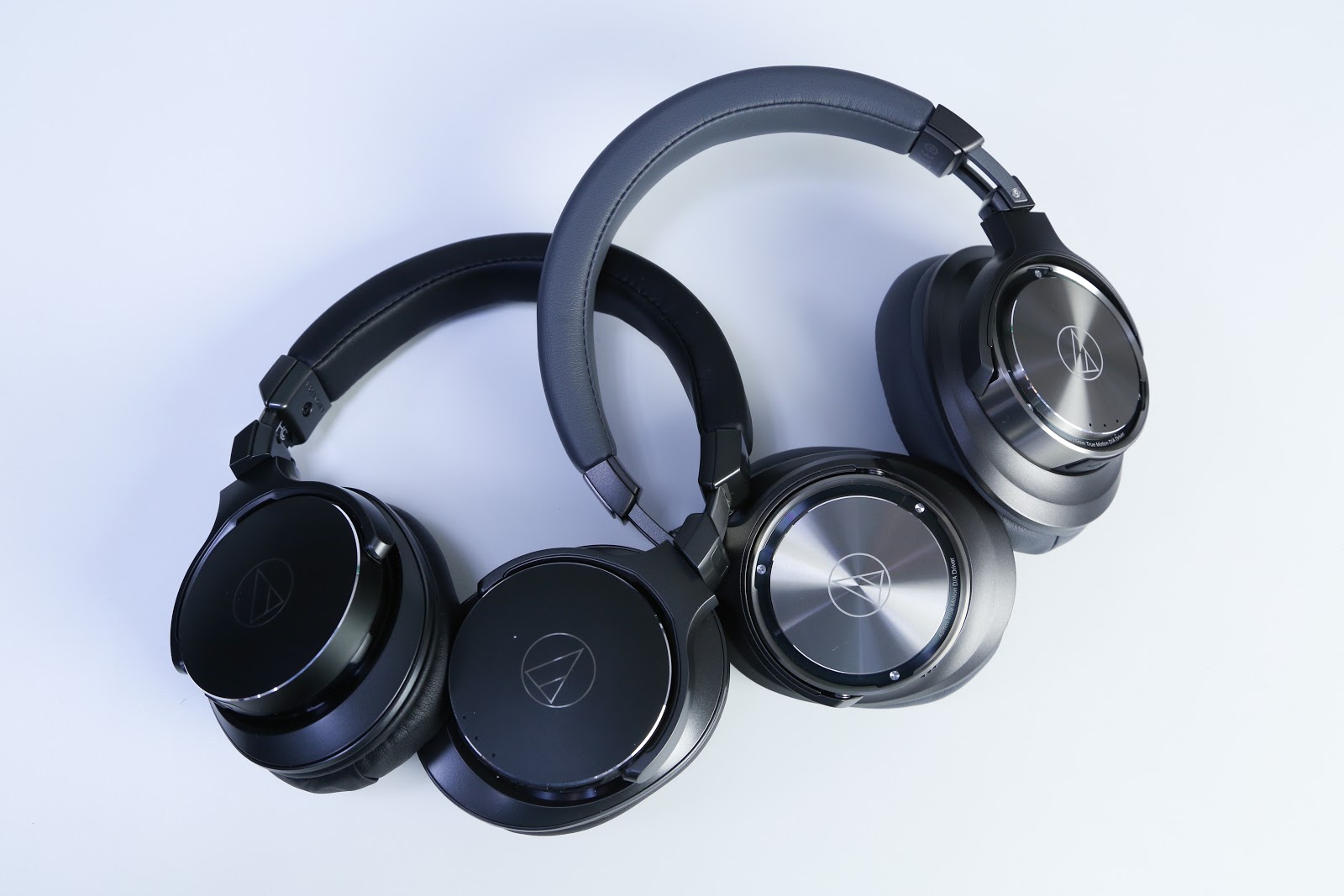
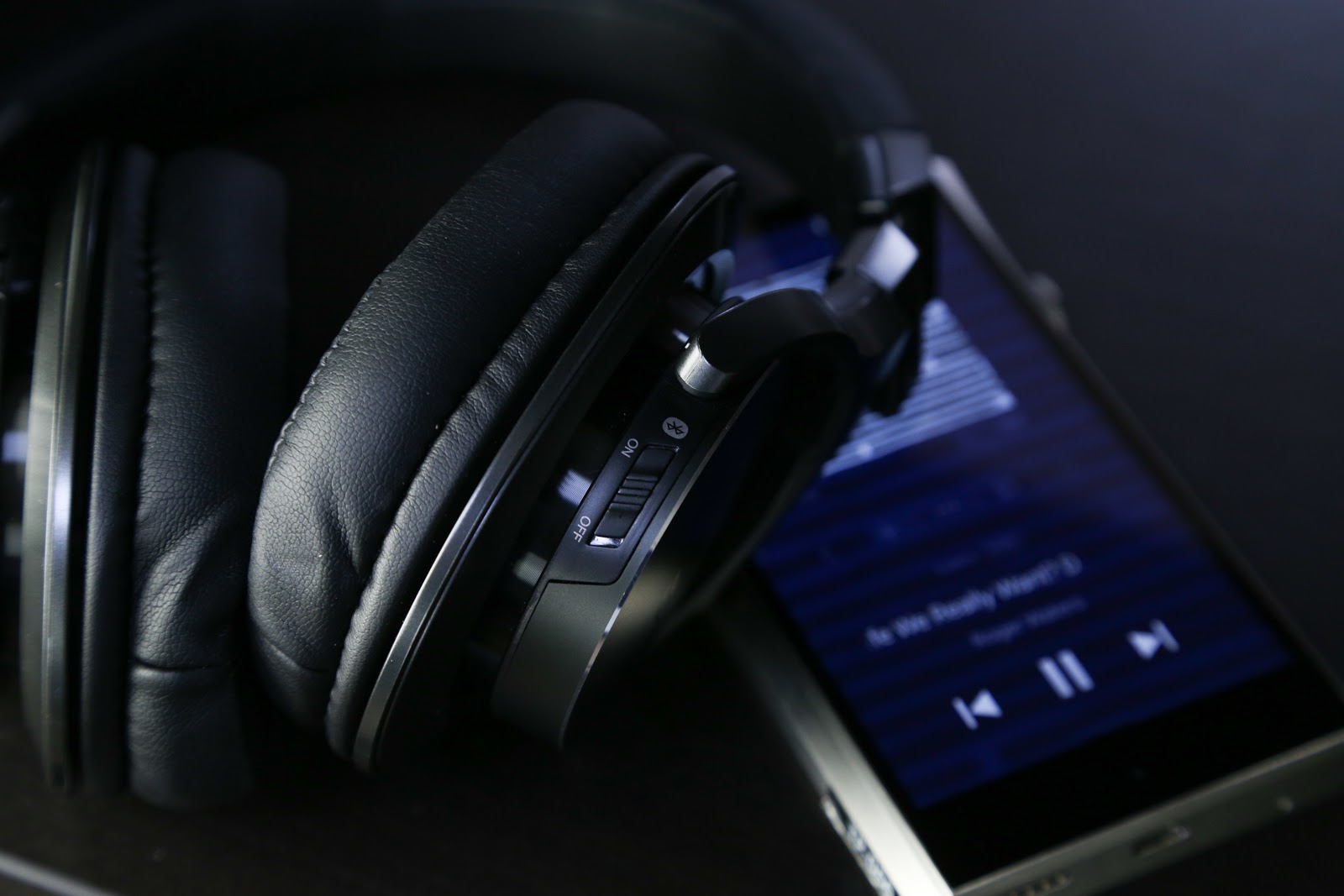
You can listen to these headphones with any device, even if it is an iPhone, but the main idea is to connect them to the device using aptX HD to listen to Hi-Res audio tracks. So far this is only possible with Astell & Kern players (starting with the AK70 model), therefore both models were tested in conjunction with Astell & Kern A & ultima SP1000. As for personal listening experience, the older model provides a more natural and detailed sound (rock, hip-hop, electronic music "come" on the solid five), while the younger one has vocal compositions and a clear distribution of instruments (the latter is important when listening classical music). Audio-Technica has long been praised by versatile headphones that are unpretentious to the genres, and new wireless models are no exception. Just some headphones cope better with heavy music, others - with jazz and so on.
Headphones can “remember” up to 8 Bluetooth devices, so if you want to use them with an iPhone, and then connect to an audio player, you will not have to set anything up again. The obvious advantage was the support of NFC, so you can pair with the same Android-smartphone with one touch. For autonomous work, everything is pretty good: the lithium-polymer battery provides up to 15 hours in continuous playback mode (it showed 13.5 hours in ATH-DSR7BT tests, ATH-DSR9BT reached 14 hours), or about 1,000 hours in standby mode. From 0 to 100%, both models charge in about 5 hours.
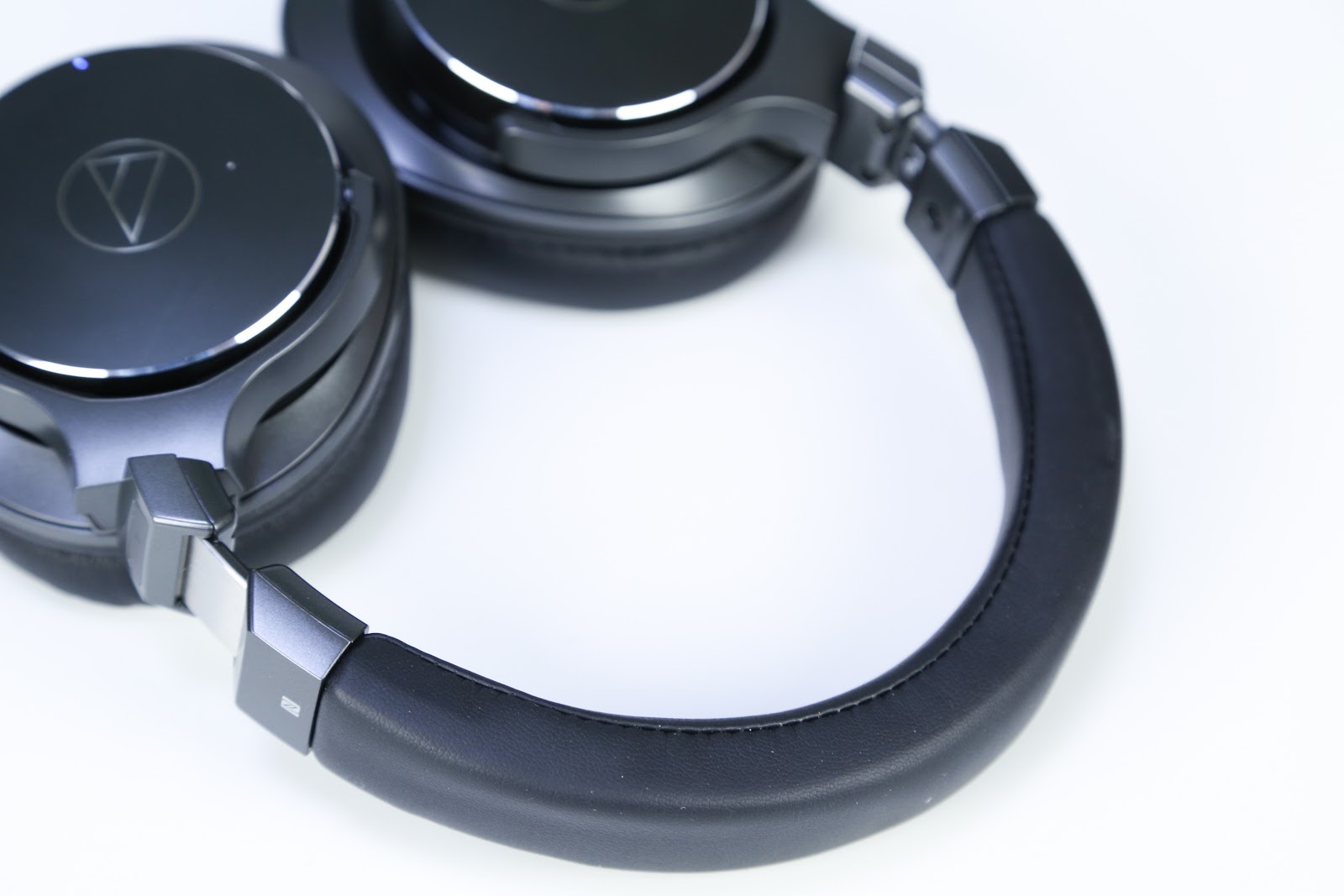
If we talk about what is better to use headphones, everything is not so clear. Considering the price of models (about 27 thousand rubles for ATH-DSR7BT and 40 thousand rubles for ATH-DSR9BT) and support for aptX HD for listening to Hi-Res tracks, it is logical to pair them with Hi-End audio players like the same Astell & Kern. However, do not forget about the presence of a microphone and call control buttons, which clearly hint at the use of devices both for their intended purpose and as a headset with an iPhone or Android smartphone. The only drawback, and both models, perhaps, is sound insulation: it is not bad, but when driving along a noisy street, the music is no longer audible so well, let alone the subway.
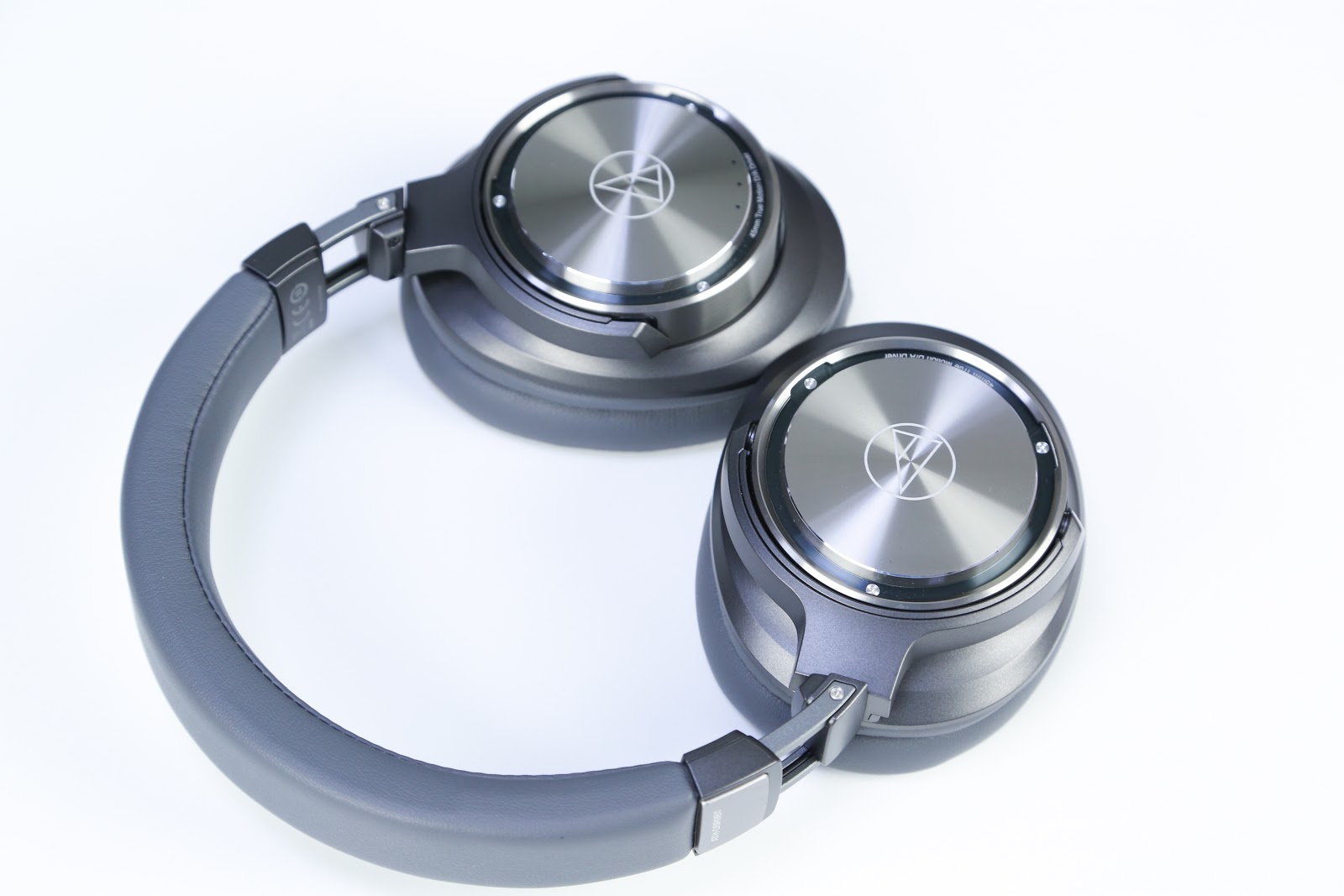
The main thing that the engineers at Audio-Technica did was - they showed the world that wireless sound is not limited to the usual conversion of digital audio to analog with loss of quality and distortion of records. ATH-DSR7BT and ATH-DSR9BT made a real revolution - these headphones are of a completely different level, and first of all for those who appreciate high-quality sound and portability. No wonder they say: a lot of wireless headphones, but units that really deserve attention. ATH-DSR7BT and ATH-DSR9BT exactly refer to the latter.

Audio-Technica made a good impression about itself in the last century, and when it introduced the legendary ATH-M50 headphones, it became almost a common name among lovers of high-quality sound. In the arsenal of the manufacturer a lot of patents and developments in the field of portable audio - from a unique damping system and ventilation to active noise cancellation. In its new headphones ATH-DSR7BT and ATH-DSR9BT Audio-Technica used the Pure Digital Drive system, which allows you to transmit sound over Bluetooth without loss of quality.

“Normal” Bluetooth Audio Transmission

Pure Digital Drive Technology
Previously, this method of transmitting sound has not involved any of the manufacturers, so the Pure Digital Drive can be called a coup in the industry of not only wireless headphones, but also portable audio as a whole. Both models are fundamentally different from the rest of the fact that their sound at any stage does not become analog, and this ATH-DSR7BT and ATH-DSR9BT cause even more interest.
Headphones reached the Russian market only in October, and now finally are in our hands. The models turned out to be with a claim to the Hi-End not only the price tag, but also in many respects the characteristics, so take everything in order.
ATH-DSR7BT and ATH-DSR9BT Specifications
| Characteristic
| ATH-DSR7BT
| ATH-DSR9BT
|
| Diaphragm diameter
| 45 mm
| 45 mm
|
| Maximum input power
| 1.5 W
| 1.5 W
|
| Frequency range
| 5 - 40,000 Hz
| 5 - 45 000 Hz
|
| Sensitivity
| 100 dB / mW
| 97 dB / mW
|
| Resistance
| 35 ohm
| 38 ohm
|
| Working hours
| About 15 hours
| About 15 hours
|
| Microphone type
| Condenser
| Condenser
|
| Microphone sensitivity
| -44 dB
| -44 dB
|
| Microphone frequency range
| 50 - 4,000 Hz
| 50 - 4,000 Hz
|
| Weight
| 300 g
| 310 g
|
Yes, it did not seem to you - these headphones do not have the usual 3.5 mm jack to connect a sound source to them with a cable. Indeed, what's the point in it, if the player produces an analog signal at the output, and do these headphones work with digital? In addition, Audio-Technica clearly explained why they did it this way and not otherwise.
The company claims that the Pure Digital Drive system, which supports aptX, aptX HD, AAC and SBC codecs, is capable of keeping the digital signal to the end and minimizing the sound distortion that usually occurs during wireless audio transmission. Therefore, instead of the built-in DAC, the headphones were equipped with the Dnote Trigence Semiconductor chip - it delivers the digital signal to the emitter without digital-to-analog conversions, thereby reducing distortion. Yes, and if desired, headphones can always be connected via USB to listen to music in high resolution. The Pure Digital Drive system is used in both models.
We all remember how low the sound quality of wireless headphones was a few years ago - then it seemed that the maximum they would fit as a headset for the phone. The appearance of the aptX codec slightly changed the situation for the better, but even then far from all manufacturers use it. But aptX HD brought the wireless sound to a completely different level, because it allowed listening to Hi-Res formats via Bluetooth, which previously seemed simply impossible.
The ATH-DSR7BT and ATH-DSR9BT use specially designed True Motion drivers, only in the case of the older model, the OFC-7N voice coil with four cores is added to provide precise control of the aperture shift. This is also a plus separating the electrical and acoustic parts of the two-layer insulation. And NFC. In general, the manufacturer seems to have surpassed himself this time in the number of technologies used.
Contents of delivery
Behind the massive box in both cases there is another black box in which the headphones themselves are located, as well as a two-meter USB cable. It helps to charge the headphones, which takes about five hours, as well as being connected to a computer or other digital source.



In addition, a soft case made of artificial leather is offered for the younger model, and a hard case with the manufacturer's logo is offered for the older model.


The package bundle is quite standard for Audio-Technica - everything is restrained and minimalist, nothing superfluous. Yes, and to Bluetooth-headphones, where there is no 3.5 mm jack, there seems to be more and nothing more.
Design
Both pairs of headphones are made in a classic monochrome design, although the ATH-DSR9BT still stands out due to interesting silver inserts on the cups. Models have a leather headband, but their ear pads, though similar in appearance, but differ in sensations. In ATH-DSR7BT, they are more familiar from eco-leather with a memory of the shape of the head and ears; ear cushions ATH-DSR9BT slightly more and in addition evenly distribute the weight of the headphones, so that the owner does not get tired of this design, even with prolonged wear.



On the right cup is located below the lever, responsible for turning on and activating Bluetooth, on the left - a volume control lever, a micro USB port (under the pad) for charging and connecting to a sound source and an unusual solution in the form of a touch control panel for playback. With it, you can both pause the track and answer the call, since the headphones are equipped with a microphone and can be used as a headset.



Touch control in headphones is no longer know-how, but if in many other models the elements are located directly on the cups, in the ATH-DSR7BT and ATH-DSR9BT the manufacturer limited itself to one under the cup - apparently, it was easier to reach. Was it possible to build in the usual physical button instead of the sensor? Yes. But this is not so cool and comfortable. Moreover, Bluetooth-headphones imply the use mainly “on the go” when you need to spend a minimum amount of time on playback control.

Right under the logo there was a place for a neat LED indicator, it is here on both models. The indicator displays not only the battery charge, but also the active codec.

The design looks impressive, but despite its size, it feels weightless on the ears. Since each pair weighs about 300 grams (the older model is a bit heavier), ear pads apparently play a role in this. In terms of design and feeling nothing to complain about, how are things going with the sound?
Sound and features

Despite the obvious similarity in design and technical characteristics, the sound of the model is completely different. Through the use of technology Pure Digital Drive ATH-DSR7BT different naturalness and improved quality. The lack of multi-stage signal processing, as in most other Bluetooth headphones, minimizes distortion and “coloring” of the sound. The junior model is capable of operating from 4 Hz to 45 kHz (quality up to 24 bit / 48 kHz), and if you connect it via USB, you can work at up to 96 kHz and use FLAC, ALAC and WAV files.
Here, by the way, measurements of ATH-DSR7BT:

To make the frequency response easier to compare, we will immediately give a graph for the ATH-DSR9BT. It can be seen that the younger model is more even, but at the same time "average".

From a technical point of view, the older model is distinguished by an expanded frequency range, increased resistance and reduced sensitivity, but mainly due to the presence of a four-core voice coil, as well as additional damping material in the cups. The ATH-DSR9BT coil precisely controls the diaphragm offset, but the very “naturalness” that the manufacturer is talking about is achieved with an acoustic resistor — it regulates the air flow before and after the diaphragm. In addition, sound distortion "extinguishes" the aluminum structure, consisting of several layers.

Of course, despite the variety of technologies used, the sound remains wireless. In both cases, the transmission is carried out via Bluetooth 4.2, plus aptX HD, aptX, AAC and SBC codecs are supported. And this sound is completely different from that played by other wireless headphones. Yet behind the marketing names there are really working technologies that can carry the digital signal to the end. And if usually the wired sound can be distinguished even by an audiophile that is not pumped, then here is a completely different case. The sound is so clean and balanced that sometimes you catch yourself thinking, and if the wire does not reach from the headphones to the player. But he is not!


You can listen to these headphones with any device, even if it is an iPhone, but the main idea is to connect them to the device using aptX HD to listen to Hi-Res audio tracks. So far this is only possible with Astell & Kern players (starting with the AK70 model), therefore both models were tested in conjunction with Astell & Kern A & ultima SP1000. As for personal listening experience, the older model provides a more natural and detailed sound (rock, hip-hop, electronic music "come" on the solid five), while the younger one has vocal compositions and a clear distribution of instruments (the latter is important when listening classical music). Audio-Technica has long been praised by versatile headphones that are unpretentious to the genres, and new wireless models are no exception. Just some headphones cope better with heavy music, others - with jazz and so on.
Headphones can “remember” up to 8 Bluetooth devices, so if you want to use them with an iPhone, and then connect to an audio player, you will not have to set anything up again. The obvious advantage was the support of NFC, so you can pair with the same Android-smartphone with one touch. For autonomous work, everything is pretty good: the lithium-polymer battery provides up to 15 hours in continuous playback mode (it showed 13.5 hours in ATH-DSR7BT tests, ATH-DSR9BT reached 14 hours), or about 1,000 hours in standby mode. From 0 to 100%, both models charge in about 5 hours.

If we talk about what is better to use headphones, everything is not so clear. Considering the price of models (about 27 thousand rubles for ATH-DSR7BT and 40 thousand rubles for ATH-DSR9BT) and support for aptX HD for listening to Hi-Res tracks, it is logical to pair them with Hi-End audio players like the same Astell & Kern. However, do not forget about the presence of a microphone and call control buttons, which clearly hint at the use of devices both for their intended purpose and as a headset with an iPhone or Android smartphone. The only drawback, and both models, perhaps, is sound insulation: it is not bad, but when driving along a noisy street, the music is no longer audible so well, let alone the subway.
New level wireless sound

The main thing that the engineers at Audio-Technica did was - they showed the world that wireless sound is not limited to the usual conversion of digital audio to analog with loss of quality and distortion of records. ATH-DSR7BT and ATH-DSR9BT made a real revolution - these headphones are of a completely different level, and first of all for those who appreciate high-quality sound and portability. No wonder they say: a lot of wireless headphones, but units that really deserve attention. ATH-DSR7BT and ATH-DSR9BT exactly refer to the latter.
All Articles